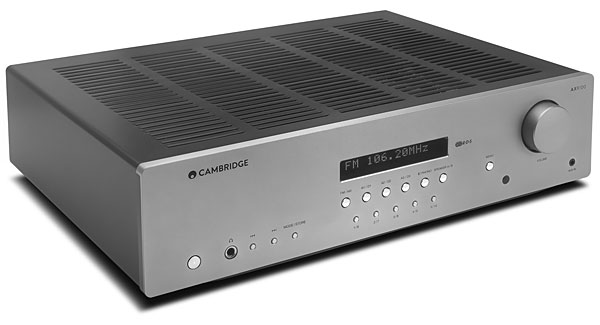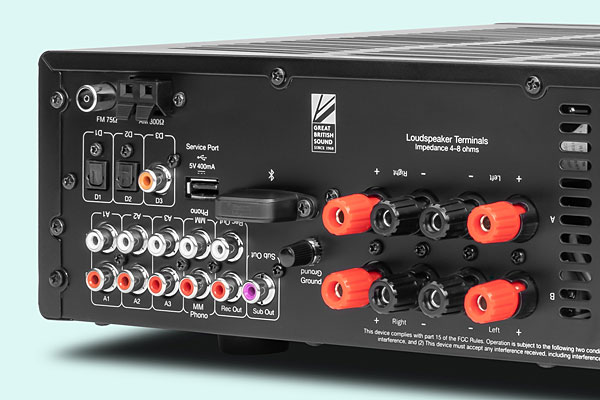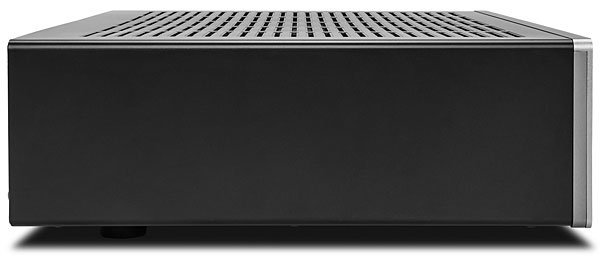It was an excellent review, but there was an error. Using coax cable the DAC is 32bit / 192khz.
Cambridge Audio AXR100 Stereo Receiver Review Page 2
Switching to a coaxial digital connection to the AXR100's 24-bit/192kHz DAC preserved these virtues in full. Did I now hear infinitesimally crisper, or perhaps "quicker" sound from the Cambridge Audio receiver? Maybe I did, but I still decline to confirm such an impossible to quantify judgement. Bringing out my long-serving Rega turntable/Ortofon cartridge LP playback source, I found the Cambridge's moving magnet phono section to be similarly capable. Backgrounds sounded satisfyingly quiet, though not as quiet as the best digital sources, of course, and overall sonic colors were sweet, warm, and suitably vinyl-y.

Nor did I neglect to run the AXR100's FM tuner thru its paces: Surely somebody, somewhere, still listens to actual radio broad- casts, as opposed to streamed versions of the same, at home. The Cambridge receiver surprised me with its signal-pulling ability, easily tuning nearly a dozen FM radio stations from about a 35-mile radius of my semi-rural location, even with my lowly dipole antenna. The best of these, like my capital region's sole classical music station—which mostly relays the robo-feed from Chicago's world-class WFMT—sounded perfectly listenable, if far from high-resolution. Sadly, there is no FM signal within my reach of sufficient quality to really speak to the Cambridge's audio performance in this regard, but I suspect it's quite good. I also briefly examined the Cambridge's Bluetooth capability, dutifully pairing up without fuss or drama and streaming from my iPhone 6. The sound was about as good, but certainly no better, than plain-vanilla Bluetooth, which is to say okay, although with that faint, inescapable "through-a-screen- door" patina.

How about headphone listening with the Cambridge? The output from the AXR100's front-panel 1/4-inch jack proved plenty powerful to drive my least sensitive headphones pair, the HiFiMan EditionX, to a satisfying volume level with obvious quality and full dynamics, though the last few steps, which delivered painfully head-banging levels, sounded a little splat-y.
Ergonomics
Cambridge Audio's AXR100 gives us little to report on the human-factors front. The front panel looks and feels lovely, but it is less of a success from an ergonomics standpoint. The small black-on-gray primary labelling presents a visual challenge when viewed without strong light, while the even- smaller lower row required reading glasses, and perhaps a flashlight—err, torch, this being a British design.

The supplied remote control is better, but not really by a wide margin. There's no illuminated keypad, the graphics are dim blue or tiny white-on-black, and the handset is littered with dozens of keys that are entirely irrelevant unless you have a full stable of Cambridge Audio-brand components. Further, the Mute key is located way up at the top and it's identical in size and feel as well as symmetrical in position to the power button. True to my nature, I confused the keys and pressed the wrong one more than once. Oops.
Conclusion
Unimportant quibbles aside, the Cambridge Audio AXR100 stereo receiver's sound reproduction is obviously excellent. This receiver may be short on the latest-generation computer playback and wireless multiroom streaming goodies—and light on features generally—as well as a bit cranky in the ease-of-use department, but it gets the most important stuff, including amplifier power and finesse, phono-playback competence, and FM radio reception and quality, very right indeed. If you're seeking something basic to connect between sources and speakers, it checks the right boxes.
- Log in or register to post comments


I thought this was an in-depth and objective article about the Cambridge Audio AXR100, a high-end stereo transceiver. The article provides information about the product's design, features, performance, and pricing, along with many clear and detailed illustrations.papa's games




































































